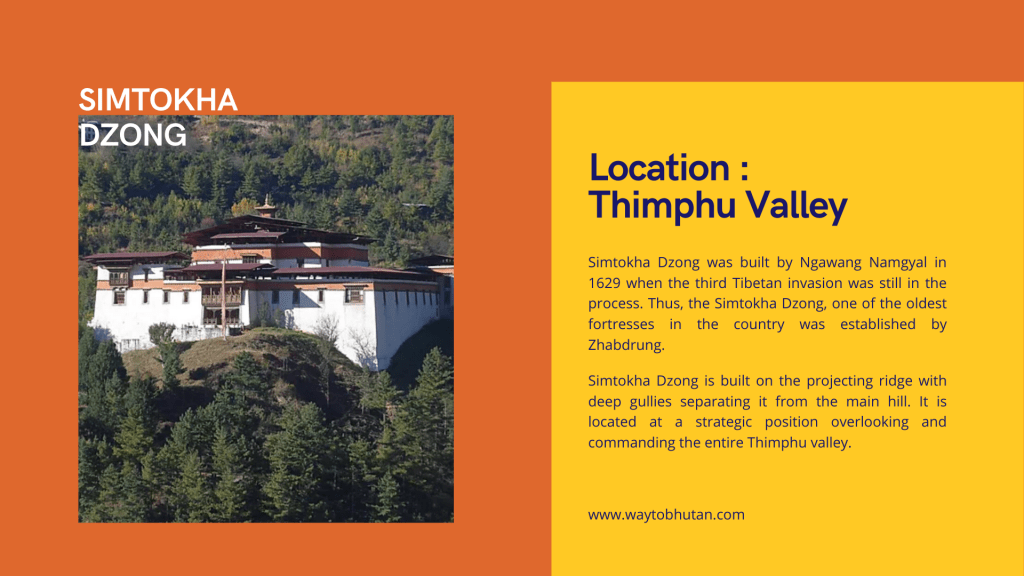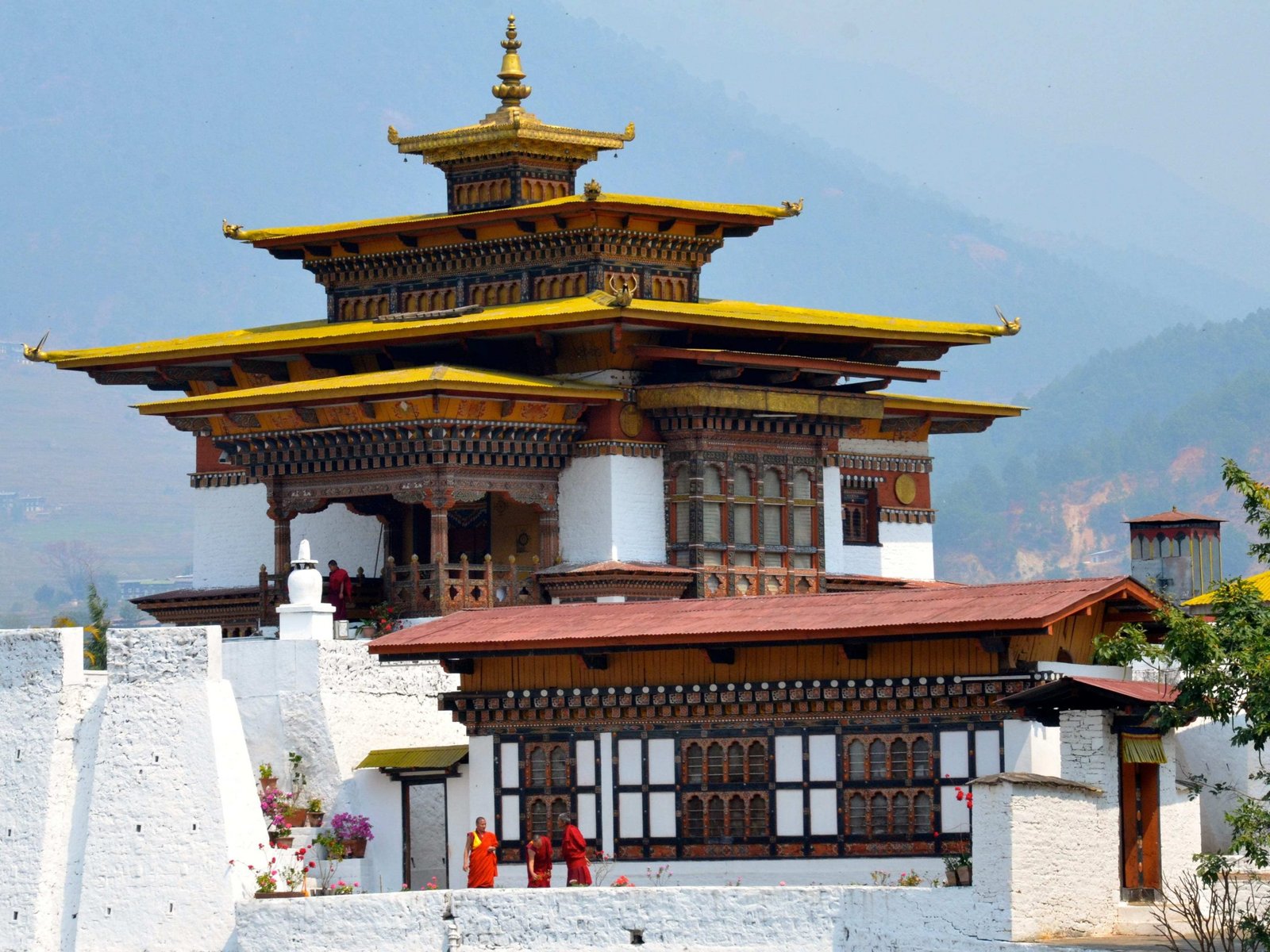In the annals of Bhutan history, we can trace that many miracles had happened and blessings to the country had come in manifolds. Zhabdrung Ngawang Namgyal was amongst the many, who made a great contribution to the extent that no other had ever done.
Born to Tenpai Nyima and Sonam Pelkyi Buthri in 1594 at Tsang in Tibet on the auspicious eleventh day of the eleventh month of the tenth Rabjung when at the time his father was just twenty-eight years old. It is also said he was born uttering the sacred sound of Dharma Aa, Aa, Aa.

Among the Dzongs founded by Zhabdrung Ngawang Namgyel, five Dzongs notably took crucial roles to uphold the authority instituted by Zhabdrung Ngawang Namgyel. After the unification of the country, he established the unique dual government system headed by Je Kenpo (the Head of religious affairs) and Desi (the Head of temporal affairs). Those Dzongs built as a fortress during the power struggles faced by Zhabdrung Ngawang Namgyel in the process of unifying the country were later expanded and modified by his successors in order to adapt court of clergies and administrators under the dual system of government.
He was an extraordinary man gifted with unusual intellect, vision, and statesmanship. Furthermore, he was also the reincarnation of Kuenkhen Padma Karpo. However, led by Tsang Desi and the Tibetan subjects instead of recognizing him rather declared other contestants Pagsam Wangpo as the reincarnation of Kuenkhen Padma Karpo.
After Tsang Desi refused to accept him as the reincarnation, he made up his mind to run away from Tibet and made his way towards the south as per the vision showered to him in his noble dream. Consequently, in 1616, at the age of 23, he arrived in Bhutan.
Zhabdrung is highly revered in Bhutan and is regarded as the founder of the country. Zhabdrung, which translates as ‘At whose feet one submits’, is considered to be an emanation of Avalokitesvara, the Buddha of Compassion and the reincarnation of Kuenkhen Pema Karpo, who was the 18th chief abbot of Ralung Monastery in Tibet.
After his arrival, he drew fame and lots of respect for his noble teaching and kindness. Later on, he is seen to be the chief agent in unifying Bhutan. One of his great contributions was the building of Dzongs (fortress) signifying the unity and the strength of Drukpas.
The dzong served as a stronghold against enemies in the past, and it now plays an important role as a combined administrative center and monastery.

Amidst the continuous attempt to destroy him and his growing power in Bhutan, he was capable enough to build many Dzongs. It is mentioned that after he arrived in Bhutan, within four years, in 1620, he built Chari Monastery in Thimphu to keep the dead body of his father and made it as the branch of Drukpa religion so that he can spread it to other parts of Bhutan.
It was in 1616 that Zhabdrung Ngawang Namgyel embarked on his historic journey from Tibet to Bhutan. Bhutan commemorates the 400th year of Zhabdrung’s arrival in Bhutan this year.
Zhabdrung Ngawang Namgyel founded Bhutan and ruled the country for over 35 years. He passed away in 1651 but his death was concealed for over 54 years under the pretext that he had entered into a strict retreat.

-
Simtokha Dzong: Simtokha Dzong was built by Ngawang Namgyal in 1629 when the third Tibetan invasion was still in the process. Thus, the Simtokha Dzong, one of the oldest fortresses in the country was established by Zhabdrung. Simtokha Dzong is built on the projecting ridge with deep gullies separating it from the main hill. It is located at a strategic position overlooking and commanding the entire Thimphu valley.
- Punakha Dzong: Punakha Dzong was built by Ngawang Namgyal in 1637 to commemorate his victory over the Tibetans and to honor the protecting deities.
- Wangdiphodrang Dzong: Wangdiphodrang Dzong which is situated between the rivers Phochhu – Mochhu (Sunkosh) and Dangchhu was built by Ngawang Namgyal in 1639 in the shape of a sleeping elephant, in two parts, and connected by the most beautiful wooden cantilever bridge.
- Paro Dzong: This Dzong was built in 1646 to strengthen the defense and garrison, Bhutanese troops, within its wall.
- Tashichhod Dzong: It was built by Zhabdrung in 1641 where today it is the center of all political and decision making regarding the developmental activities that are to be carried out.
- Drugyal Dzong: This Dzong, located fifteen kilometers from Paro, was built by Zhabdrung in 1649 in the shape of the summit and on the slope all round beginning from the foundation of its wall. It clearly shows the wisdom and very talent of Ngawang Namgyal in the art of establishing a chain of defensive fortresses against the Tibetan menace.
The Dzong system was also for the first time introduced in Bhutan from Tibet by Zhabdrung to make it as a center of temporal and spiritual authority. The Dzongs built by him all became the pivot of all political, governmental, and religious activities. Further, these Dzongs also helped a lot in strengthening the defense of the country from foreign aggression and eliminated the powers of feudal lords who once assumed a total power in their region.
Today, all these reasons stand-alone as to why dzongs are important for Bhutan and the Bhutanese.
Content Contributed by Basu Dev Acharja.







